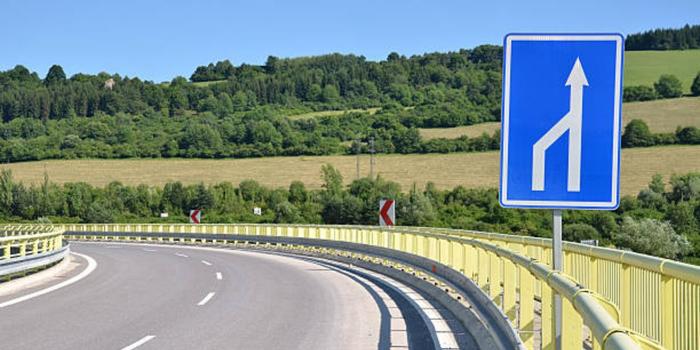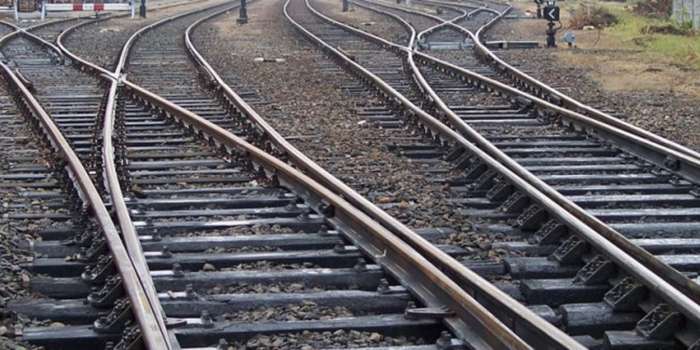When traveling, you may see smaller roads that guide you to bigger highways or main streets. These paths are called feeder roads.
In today’s reading, you will see what a feeder road is, its benefits, and its impact on urban sprawl.
Feeder Roads Meaning: Frontage Road
Feeder roads are also known as service roads, access roads and local roads. Their meaning is clear from the name “Feeder” which means that they feed or supply your traffic to main roads. You can see them on the sides of highways.
In other words, a feeder road is a secondary path that connects your local areas with highways or main roads. Basically, it is used to provide you easy access to your surrounding places like towns, smaller cities and fields.

History of Feeder Roads
There is not a single person involved in the invention of feeder roads. Actually, they were developed gradually to improve your crop production. In 1944, the first official budget for feeder roads was granted in the US.
This was a budget of $150 million per year. This small step promotes your agricultural productivity with the time. Right now, you can see each developed country has feeder roads. Moreover, the World Bank also promotes feeder roads as it funded many governments for their construction.

Importance of Feeder Roads
Feeder roads are very important for you in both rural and urban areas. As you are aware, these roads connect your villages with big cities. So, as a farmer you can earn more with a good transportation option. You can notice that many foreign traders invest in making factories in rural areas that have feeder roads.
Actually, they know that they can transport their material easily. Feeder roads also help you to grow the GDP of your country because they create new jobs and directly connect farmers with industrialists. In emergency situations, these roads can save your life as they provide a faster path for ambulances and rescues.
Feeder Road Sign
Well, a feeder road sign tells you that your main road or highway is connected with local roads. So, when you see this type of sign board you should slow down your vehicle. In addition, you should watch other vehicles that can join you from the other side or feeder road.

Shape of Feeder Road Sign
You will see more than one shape of feeder road sign in different countries.
Diamond Shaped: Commonly, a black “Y” on a yellow diamond board is used to tell you that a feeder road is connected with this highway. In this symbol, the directed straight line indicates your main road. And the other slotted line tells you about the feeder road.
Blue Rectangle: Another shape is a rectangular blue sign with the same “Y” shape on it. Basically, it gives you the same message but with a different shape and color.
Triangle Shape: You may also find a triangle with a red border and a perpendicular “T” shape on it. You might see this type of sign board on highways that connect multiple feeder roads.
At some places, you might also see a written statement like “Feeder Road Ahead” to warn you clearly. Actually, these symbols and shapes only remind you to slow down your vehicle.
Standards For Feeder Road Construction
- Your road should be 300mm higher than the ground surface.
- You should keep a total 14 to 24 feet width of the feeder road for dual lane roads.
- Always select the material according to your traffic volume. For example, if you have low traffic volume you can use gravel.
- If there are more slow vehicles and pedestrians on the road then you have to build wider shoulders of your road.
- Your drainage system should be constructed according to the weather conditions of your specific area.
- If you want to make open drainage then the bottom should be flat. Moreover, its width can vary from 400 to 500 mm with a depth of 350 mm.
- Proper sign boards must be placed near curves and populated areas for your safety.
- You have to make the road wider from sharp curves.
- Your road design should be consistent for every 5 to 15 km, to reduce road accidents.
- In hilly areas, you must add a wider passing lane, install reflective poles and safety barriers.
These are general standards to build a feeder road. Therefore, you might check your local rules and regulations before the construction of your feeder road.
Example of Feeder Road
Feeder Road Houston
Well, the economy of Texas depends on rural transportation of goods. This is why Houston is famous for its feeder roads. In Houston, there are more than 80% (65,000 miles) of feeder roads that connect your rural areas with markets. You can use these roads to reach shops, stores and farms that are located at a distance.
Advantages of Feeder Roads
-
Efficient Connectivity
Basically, the main goal of feeder roads is to connect your rural areas, villages and different communities. For example, you can observe that 50% of Africans live in disconnected areas where feeder roads are the only solution.
-
Reduce Your Cost
As you already know, feeder roads connect farmers with markets. So, you can sell your crops directly in factories at higher prices. In addition, you can buy seeds and fertilizers directly from suppliers at lower prices.
-
Save Your Time
When you have feeder roads you do not need to drive on rough and indirect paths. Indirect paths with digs and potholes. So, when you avoid these obstacles you may save your time to reach your destination.
-
Increase Crop Production
When you know that you have easy access to the market and heavy machinery. You may grow more crops which increases the supply of crops in your country. This step can also reduce poverty from your rural areas.
-
Allow Emergency Support
With the help of feeder roads, you can get emergency support when you need it. In case of any natural disaster, your government can supply you food and medicine without delay.
-
Easy Access to Education
There are many villages and towns that do not have schools and colleges. You have to go to distant cities that are not connected with roads. At that point, feeder roads create paths for your school buses and vans.
Disadvantages of Feeder Roads
-
Costly maintenance
As you know, feeder roads are constructed for short-distance travels. But when your heavy vehicles use these roads they get damaged. So, you have to repair these roads again and again which result in more expense.
-
Deforestation & Overgrazing
First of all, you have to cut many trees to make a clear path for feeder roads. After that, you clear more land to grow crops near a feeder road. In this way, you increase deforestation.
Plus, when you get connected with forests you take your animals to graze there. Therefore, you can cause overgrazing too.
-
Increase Risk of Accidents
You can see most of the feeder roads are not properly repaired. Even sign boards and street lights are not installed on them. Moreover, you can face animals on the road. These all things increase road accidents.
What is Railway Feeder Road?
A railway feeder road is a road that connects your railway station to main roads. It helps you to reach the station easily from your town or village. Moreover, the railway feeder road also connects nearby places with stations to provide emergency support at your station.

How Feeder Roads Impact Urban Sprawl?
Feeder roads connect your village to big transport routes. Therefore, they make empty land easy for you to reach. This attracts builders to make new projects. Over time, your city spreads outward which results in urban sprawl.
More Related Terms
Spur Road
It is a small road that is constructed on a temporary basis. Basically, it comes from the highway but does not join it again. You may often see it near wood harvesting sites or mining sites, military bases, etc.
Collector Road
A collector road is known as a distributor road. Actually, it moves your traffic from local streets to bigger roads. It usually carries a medium amount of traffic at an average speed. Plus, it does not run beside the highway like a feeder road.
Slip Road
A slip road is also called a slip lane or filter lane. It is a short road that allows you to join or leave a big road easily like a motorway. It means that you don’t have to wait for a signal or stop your vehicle when you want to join or leave the main road.
Wrapping It Up
Now you know what feeder roads are, it’s easy to see how much they impact your daily travel. They reduce the pressure on crowded highways and guide drivers. Their function is to also connect local areas with main routes.
If you have any questions about road construction, material or traffic safety products, please talk to us now. We are China’s top supplier and manufacturer in this field.


-80x69.png)

